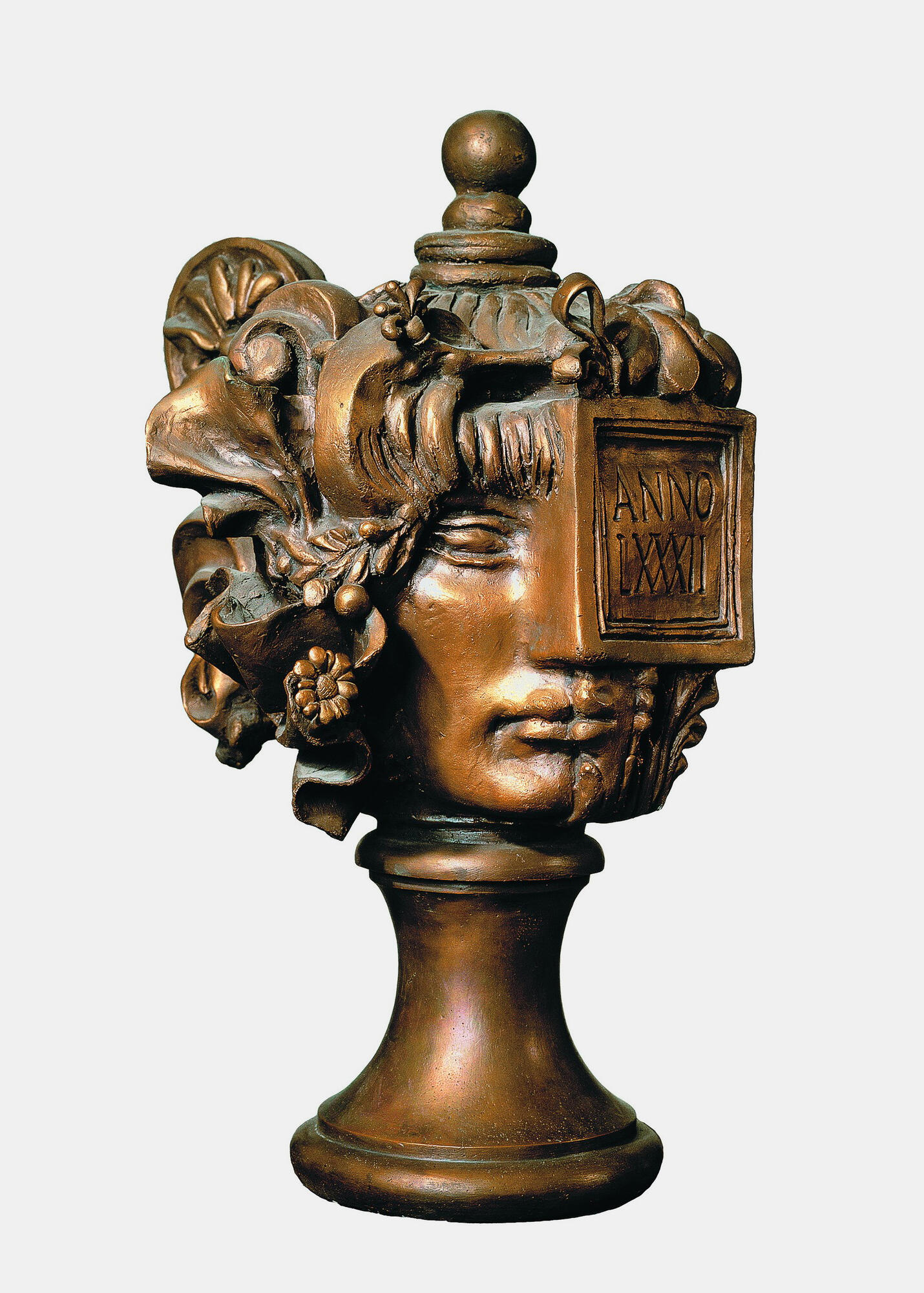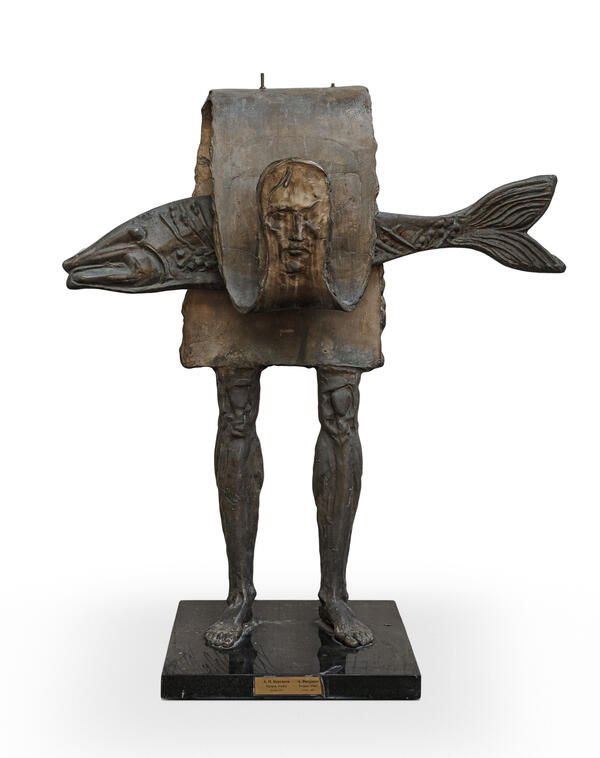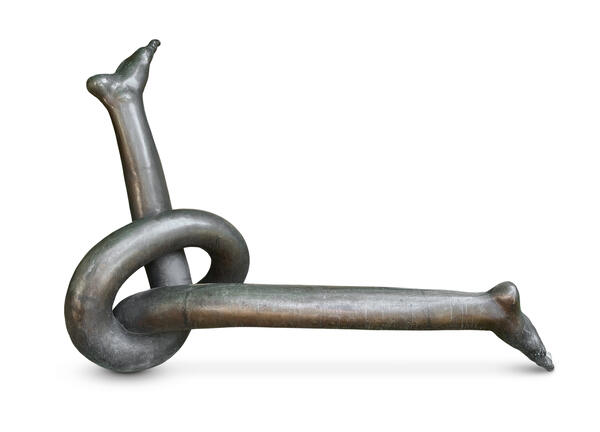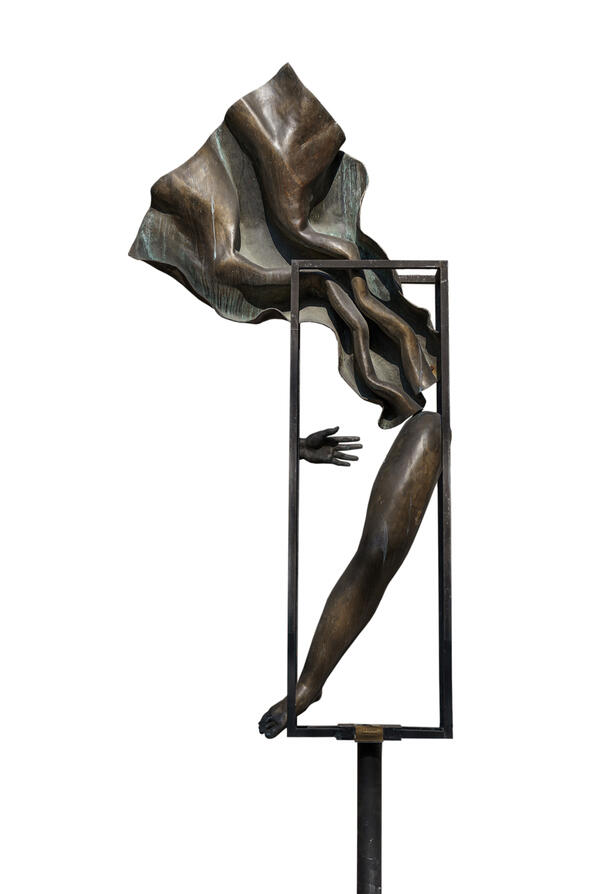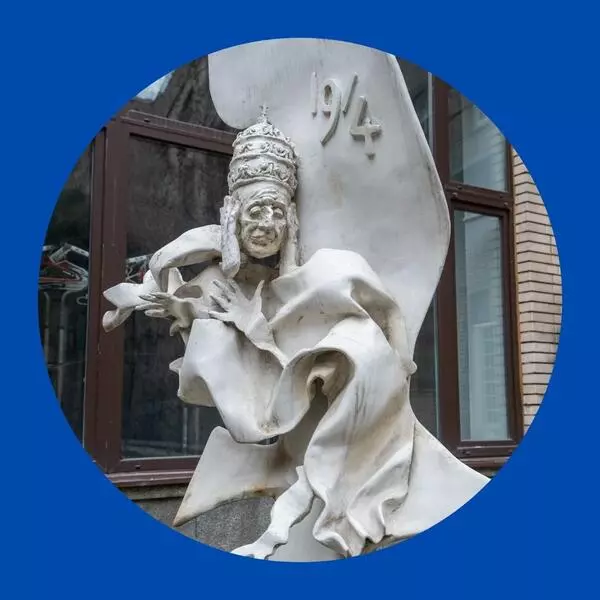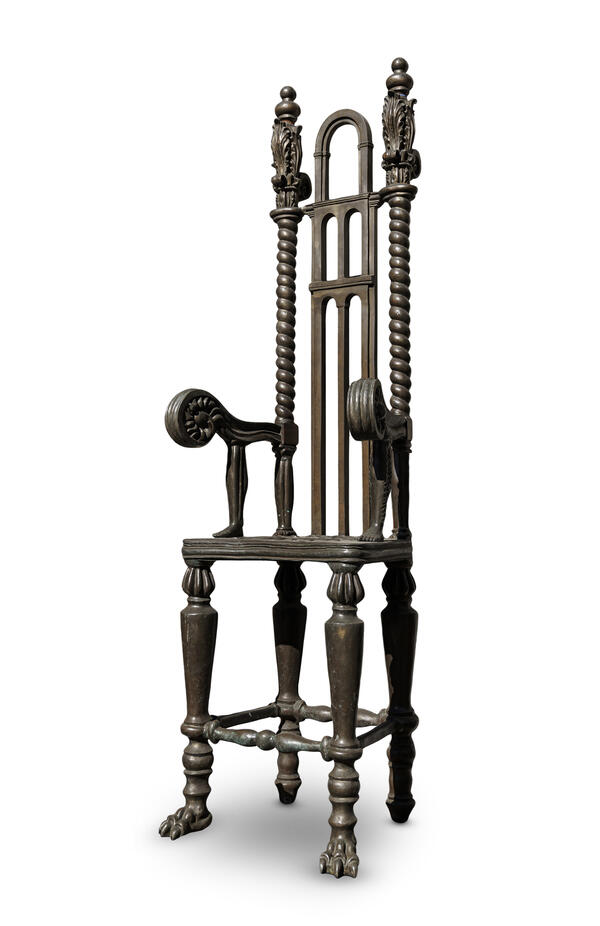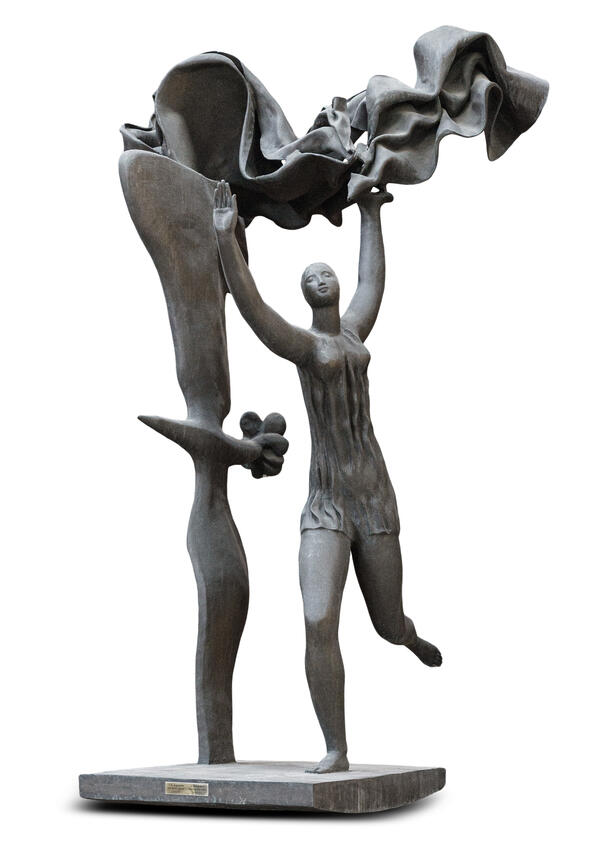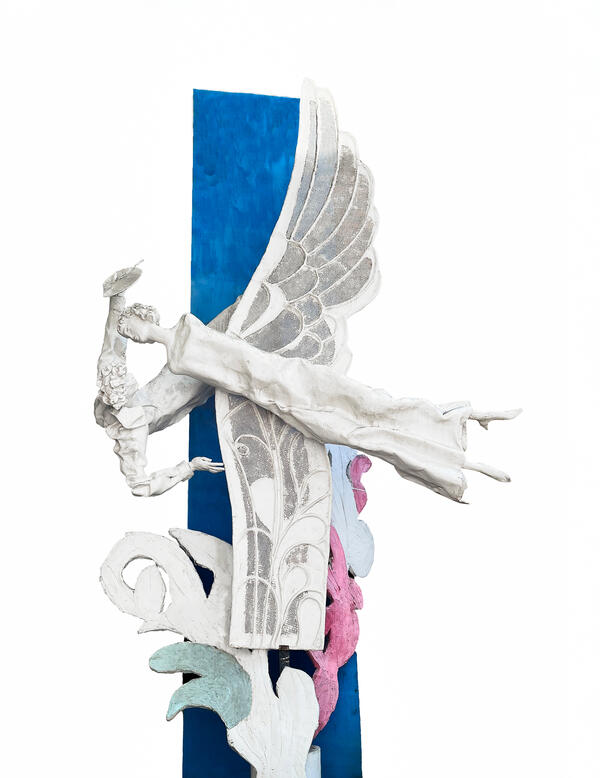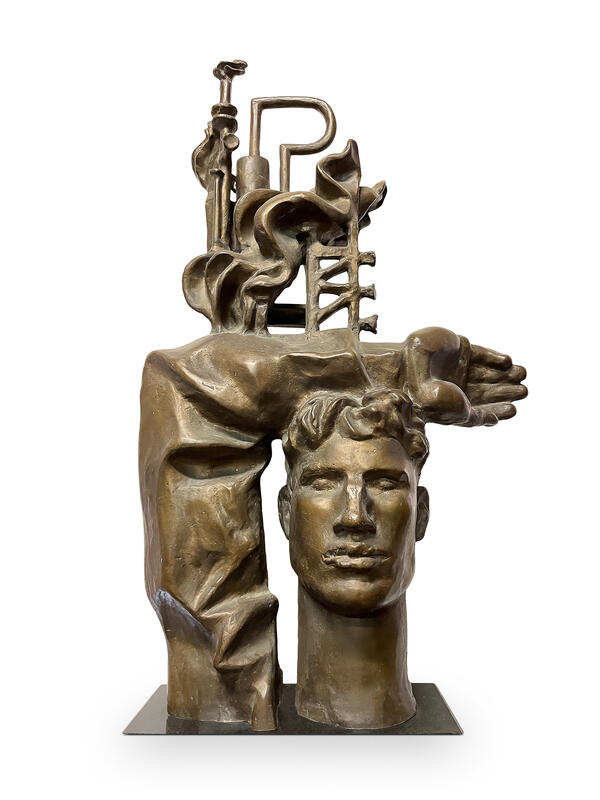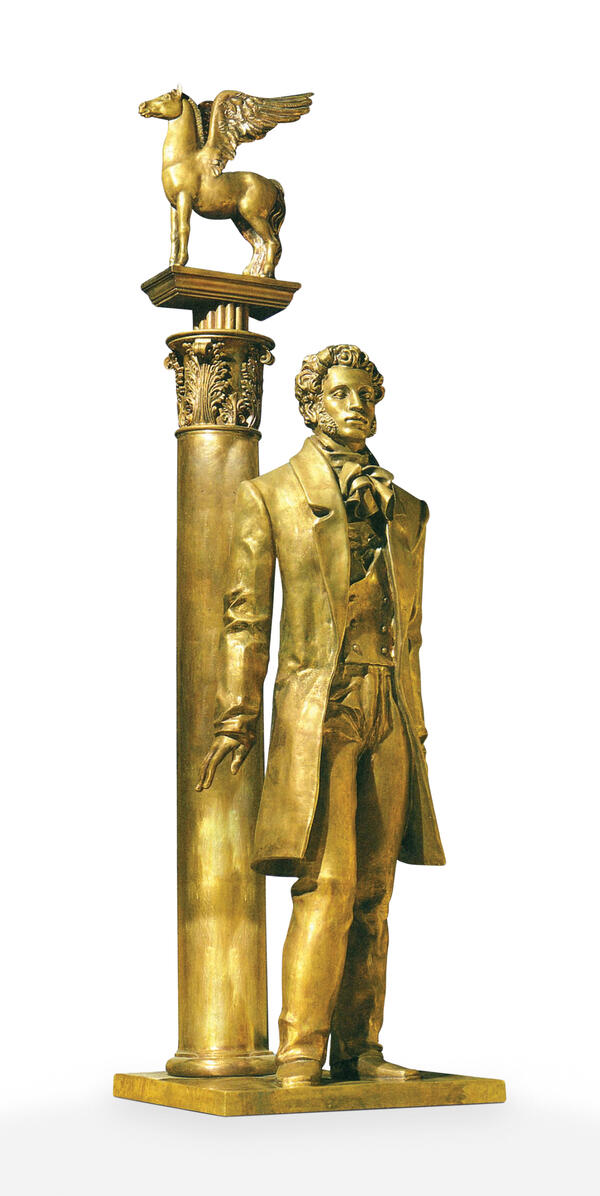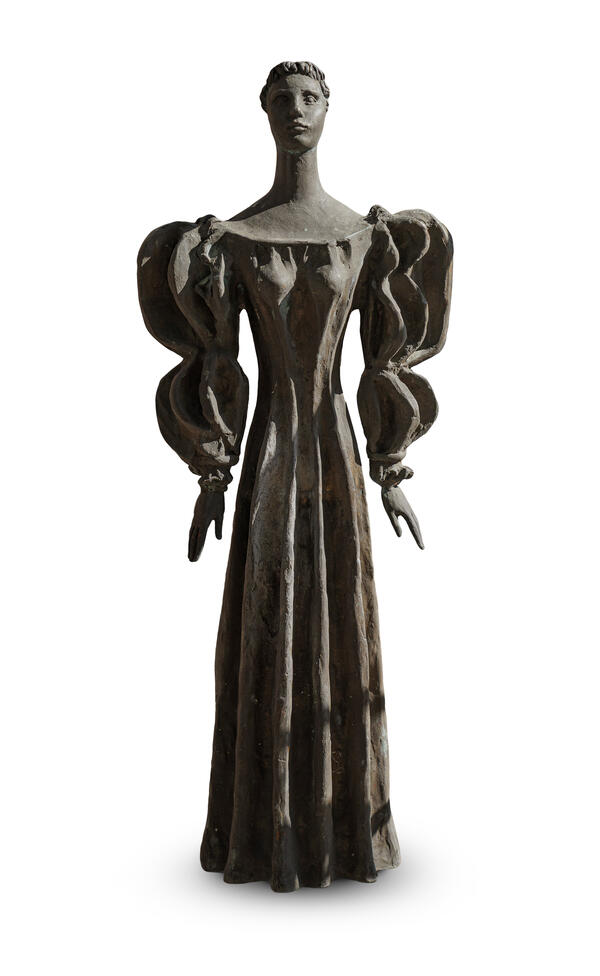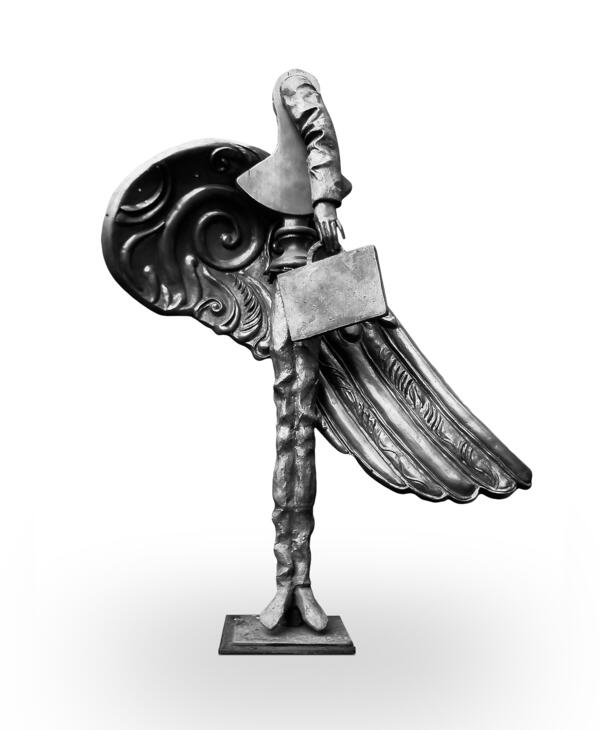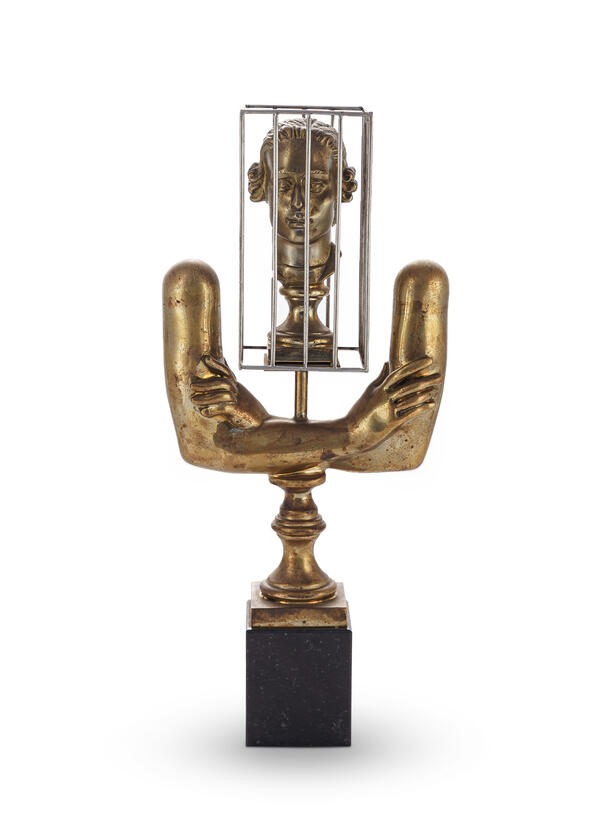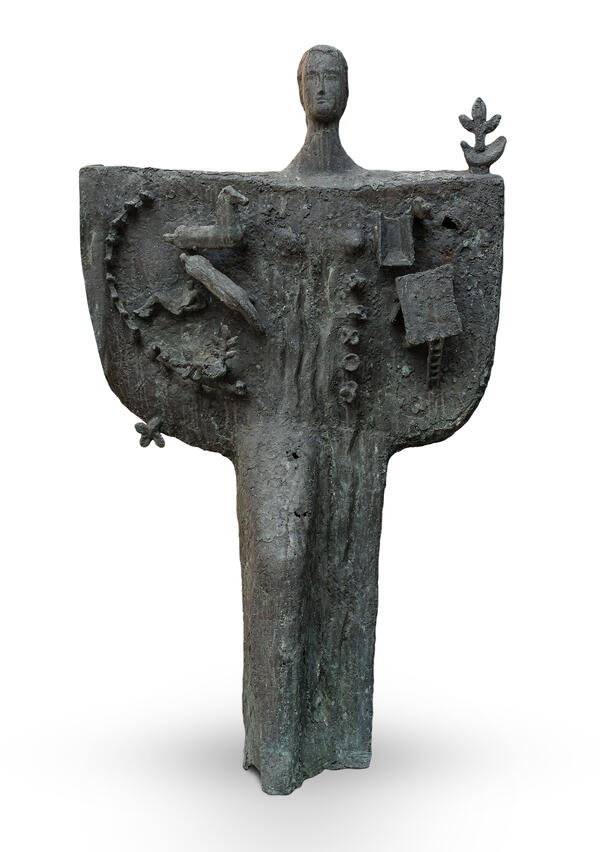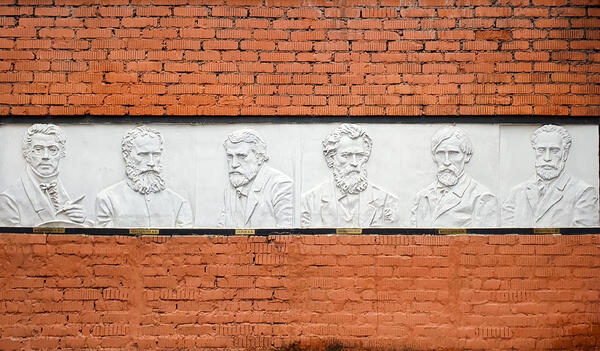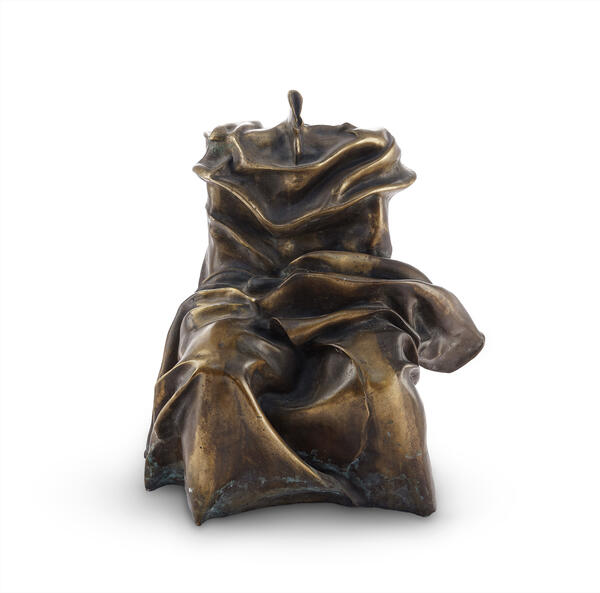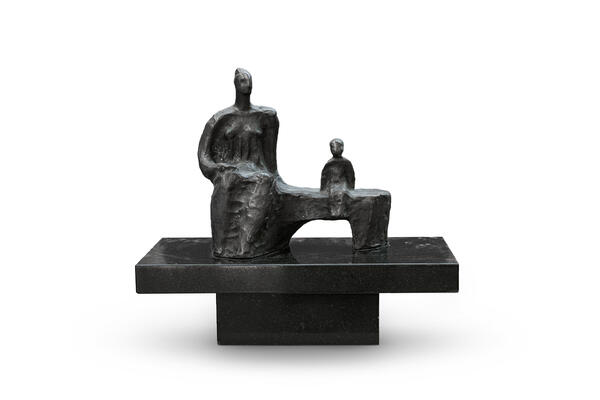The sculpture “Urn” is installed in the museum’s Small Courtyard. This is a neoclassical artwork by the sculptor Alexander Nikolayevich Burganov.
In ancient times, urns began to be used for keeping the cremated remains of a person who had passed away. Similar-shaped vessels were also used to carry water from rivers and springs and to collect voting slips in courtrooms, meaning that they also served as utilitarian objects. However, they are still traditionally associated with sorrow and death.
Having long been interested in ancient art, the sculptor was inspired to develop this theme in his new work. In this case, an urn is a portrait of a young woman. Her head is mounted on a classic-style pedestal and her hair is decorated with flowers and leaves.
The portrait is evolving and creating several compositions. The face seems to be rotating, with several profiles intertwined with plant elements. Their curls turn into lips and one part of the face seems to be kissing the other. This sculpture, like many others of Alexander Burganov’s works, features a series of fantastical transformations. Some mysterious events are taking place within the portrait. It seems as if it is coming to life before the viewer, transforming into a mystical and captivating sight.
This is some kind of a magical portrait. While the urn is a functional object,
it is much more than just a container for ashes. Most importantly, it is a
vessel for the soul. The idea of magical classics is beautifully expressed in
the portrait. The classical elements complement the magical sculpture,
transforming the urn into a portrait. At the same time, this object is
associated with the liturgy of death. The unexpected combination of a young
beautiful face and the idea of death creates a powerful contrast. It highlights
the transience of existence and of the new life, the passage of time, the
change of generations, and the connection between cultures and traditions. One
can spend a lot of time looking at the sculpture “Urn”, each time discovering
new sculptural details and unexpected transformations that spark the
imagination and invite the viewer to reflect on philosophical questions.
